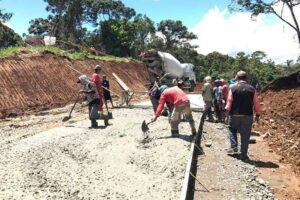Addressing unmet needs of Filipinos living with psoriasis

Psoriasis Philippines (PsorPhil) estimates there are up to 2 million Filipinos living with psoriasis, a chronic, noncommunicable, painful, disfiguring, and disabling disease. While psoriasis can occur at any age, it is most common among people who are 50 to 69 years old, according to a 2016 report on psoriasis published by the World Health Organization (WHO).
Common signs and symptoms include red patches of skin covered with thick, silvery scales; small scaling spots (commonly seen in children); dry, cracked skin that may bleed or itch; itching, burning or soreness; thickened, pitted or ridged nails; and swollen and stiff joints.
According to the Department of Health, people with psoriasis have an increased production of skin cells. While skin cells are normally made and replaced every 3 to 4 weeks, this process only takes about 3 to 7 days in psoriasis. The resulting buildup of skin cells is what creates the patches associated with psoriasis.
With no clear cause or cure, psoriasis is an autoimmune disease, which means that the part of the body’s own immune system becomes overactive and attacks normal tissues in the body.
Both men and women can get psoriasis. While it occurs mostly in adults, children can also have psoriasis. The US Centers for Disease Control (CDC) said that some people with psoriasis also have an inflammatory condition which affects their joints, called psoriatic arthritis. Psoriasis is also associated with other serious, debilitating and chronic illnesses such as diabetes and heart conditions. The CDC, meanwhile, emphasized that psoriasis is not contagious.
Suicidal ideation (thinking of or planning to commit suicide) rates among Filipinos living with psoriasis rose to 24% from 18% during the coronavirus disease 2019 (COVID-19) pandemic, according to the Philippine Coalition for Psoriatic Disease (PCPD).
PsorPhil is advocating the enactment of House Bill No. 9821, otherwise known as the National Psoriasis Care Program Act, under the previous Congress. The bill enhances access to psoriasis treatment in the country by establishing a National Psoriasis Care and Control Program that would serve as the national framework of psoriasis-related activities of the DoH.
The proposed legislation also mandates the creation of a Psoriasis Assistance Fund to support the program; and donations to the fund will be exempted from taxes. It also directs the Philippine Health Insurance Corp. (PhilHealth) to expand its benefit packages to include screening and treatment for all types and severity of psoriasis. People living with psoriasis are considered persons with disabilities (PWDs) under the proposed law.
The WHO report that improving access to early diagnosis and appropriate treatment for psoriasis requires universally accessible healthcare systems that provide people-centered care for patients with complex, lifelong conditions.
“At a minimum, public and private facilities should provide the drugs included on the WHO Model List of Essential Medicines, including systemic therapies. Universal health coverage schemes should cover the costs of these treatments,” the report said.
Therapies include the application of creams and ointments on the skin, exposure to ultraviolet light, and oral and injected medications.
Teodoro B. Padilla is the executive director of the Pharmaceutical and Healthcare Association of the Philippines (PHAP), which represents the biopharmaceutical medicines and vaccines industry in the country. Its members are at the forefront of research and development efforts for COVID-19 and other diseases that affect Filipinos.




